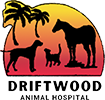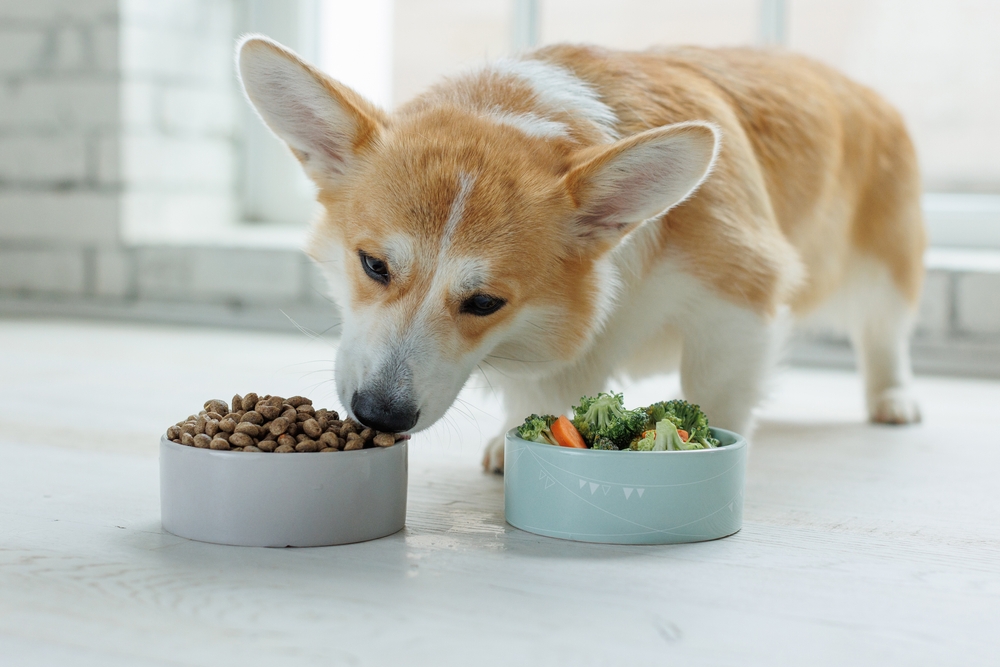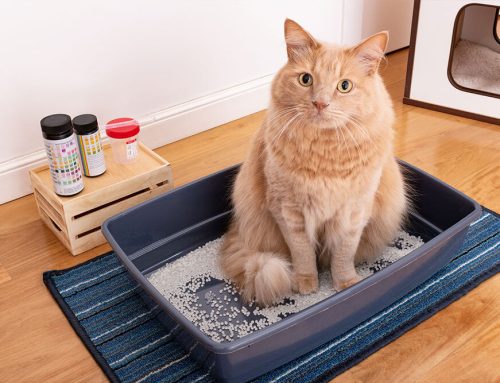How to Read a Pet Food Label: A Veterinarian’s Guide to Smarter Choices
Choosing the right food for your pet can feel overwhelming, especially with the vast array of brands, formulas, and nutritional claims on the market. But fear not—understanding pet food labels is easier than you think!
At Driftwood Animal Hospital in Daytona Beach, Florida, we believe that good nutrition is the foundation of a long and healthy life for your pet. That’s why we’re here to help you decode pet food labels and make informed choices that truly benefit your pet’s well-being.
The Basics of a Pet Food Label
Pet food labels are regulated by the Association of American Feed Control Officials (AAFCO) to ensure they meet minimum nutritional requirements. However, understanding how to interpret them is crucial.
When reviewing a pet food label, focus on:
- Product Name & Species – Indicates the intended pet species and main ingredient(s).
- Nutritional Adequacy Statement – Confirms if the food is “complete and balanced” for a specific life stage.
- Ingredient List – Shows ingredients in descending order by weight.
- Guaranteed Analysis – Lists percentages of protein, fat, fiber, and moisture.
- Feeding Guidelines – Offers suggested portion sizes based on weight and activity level.
Let’s break these down in more detail. Learn More: Understanding Pet Food Labels – AAFCO
1. Understanding the Nutritional Adequacy Statement
The nutritional adequacy statement is one of the most critical parts of a pet food label. It tells you whether the food provides complete and balanced nutrition for a specific life stage (e.g., growth, adult maintenance, senior, or all life stages).
Key Tip: Always look for foods labeled “Complete and Balanced” based on AAFCO feeding trials or nutrient profiles.
Medical Considerations
- Puppies & Kittens need higher protein and fat for growth.
- Senior pets often require fewer calories and more joint-supporting nutrients like omega-3s and glucosamine.
- Pets with medical conditions (e.g., kidney disease, obesity, diabetes) may need specially formulated diets prescribed by a veterinarian.
2. Decoding the Ingredient List
The ingredients are listed in descending order by weight, meaning the first few ingredients make up most of the food. But weight includes water content—so whole meats (like “chicken”) may appear higher than they actually are in dry weight.
What to Look For:
- High-Quality Protein: Chicken, beef, turkey, fish, lamb, or meat meals (e.g., “chicken meal”).
- Whole Grains & Vegetables: Brown rice, sweet potatoes, carrots, peas for fiber and vitamins.
- Healthy Fats: Fish oil, chicken fat, flaxseed for coat and joint health.
What to Avoid:
- Meat By-Products: Can include low-quality parts like beaks and feet.
- Artificial Colors & Preservatives: BHA, BHT, ethoxyquin may have health risks.
- Excessive Fillers: Corn, wheat, and soy provide little nutritional value for many pets.
Medical & Behavioral Implications
- Some preservatives and artificial dyes can contribute to allergic reactions or hyperactivity in sensitive pets.
- High carbohydrate content may lead to weight gain and blood sugar spikes in diabetic pets.
3. Interpreting the Guaranteed Analysis
The Guaranteed Analysis (GA) provides the minimum percentages of:
- Crude Protein (for muscle and organ health)
- Crude Fat (for energy and coat health)
- Crude Fiber (for digestion)
- Moisture (higher in wet food, lower in kibble)
How This Affects Health
- Active dogs need higher protein & fat to sustain energy.
- Overweight pets benefit from lower fat & higher fiber to stay full.
- Pets with kidney disease require lower protein & phosphorus to reduce kidney workload.
4. Feeding Guidelines & Adjustments
The feeding guidelines on a pet food bag are general recommendations based on average weight and activity levels.
However, every pet is unique, and their diet should be adjusted based on:
- Age (puppies eat more frequently, seniors may need fewer calories)
- Activity Level (working dogs need more food than indoor lapdogs)
- Health Conditions (obese pets require portion control, diabetic pets need consistency)
Home Management Tips
- Monitor Body Condition Score (BCS): You should feel your pet’s ribs but not see them.
- Weigh Your Pet Monthly: Small weight changes can indicate overfeeding or underfeeding.
- Consult Your Veterinarian: Get a personalized feeding plan based on your pet’s needs.
Need help calculating your pet’s daily calorie needs? Try this Pet Calorie Calculator.
Pet Food Marketing vs. Science: What You Should Know
Pet food marketing is a powerful industry, often using buzzwords and emotional appeals to convince pet owners that certain diets are superior. While flashy labels and persuasive commercials make impressive claims, not all of them are rooted in science.
Here’s what marketing might try to convince you of—and what the science actually says about these claims.
1. “Dogs Need a High-Protein Diet – They’re Basically Wolves”
Many pet food brands market high-protein diets by claiming that dogs should eat like their wild ancestors, the wolf. While it’s true that dogs descended from wolves, thousands of years of domestication have fundamentally changed their dietary needs.
The Truth:
- Unlike wolves, dogs are omnivores and can digest both animal and plant-based ingredients.
- Excess protein isn’t always beneficial—too much can strain the kidneys, especially in senior pets.
- What matters most is protein quality, not just quantity.
2. “Grain-Free Diets Are Always Better”
Many pet food brands promote grain-free diets as a superior option, claiming that grains are harmful or that dogs don’t need them. However, grain-free is not inherently better, and in some cases, it may be worse.
The Truth:
- Grains provide essential nutrients like fiber, vitamins, and minerals.
- Some grain-free diets replace grains with peas, lentils, or potatoes, which have been linked to dilated cardiomyopathy (DCM), a serious heart condition in dogs.
- Unless your pet has a grain allergy (which is rare), grains can be part of a balanced, nutritious diet.
3. “Raw Food is the Most Natural and Healthiest Diet”
Raw food diets have gained popularity, with claims that they mimic a natural, ancestral diet and provide superior health benefits. However, feeding raw food comes with risks that pet food companies may not highlight.
The Truth:
- Raw diets may pose serious health risks, including bacterial contamination (Salmonella, E. coli, Listeria) that can affect both pets and humans.
- Many homemade raw diets are nutritionally unbalanced, leading to calcium, phosphorus, or vitamin deficiencies over time.
- Cooking food does not destroy nutrients when done properly—it can actually make some nutrients more digestible.
Talk to your veterinarian before switching to a raw diet!

4. “By-Products Are Always Bad”
Some pet food brands aggressively market “by-product-free” food, suggesting that all by-products are low quality or harmful. But the truth is, by-products can actually be highly nutritious.
The Truth:
- By-products include organ meats like liver, heart, and kidneys—which are rich in vitamins, minerals, and amino acids.
- In the wild, predators eat the organs first because they are some of the most nutrient-dense parts of an animal.
- The real concern is poorly defined “generic” by-products. Look for labels that specify “chicken by-products” rather than just “meat by-products”.
5. “Corn is Just a Cheap Filler That’s Bad for Pets”
Corn often gets a bad reputation in pet food marketing, but this misconception is not supported by science.
The Truth:
- Corn is highly digestible when properly processed and is a good source of carbohydrates, essential fatty acids, and fiber.
- It contains antioxidants like beta-carotene, vitamin E, and linoleic acid, which support skin, coat, and immune health.
- Food allergies to corn are very rare—proteins like beef, dairy, and chicken are far more common allergens.
Bottom Line: Don’t Fall for Marketing Gimmicks. Not all pet food marketing is misleading, but buzzwords don’t equal good nutrition.
How Driftwood Animal Hospital Can Help
Choosing the right pet food isn’t one-size-fits-all—it depends on your pet’s age, breed, lifestyle, and health conditions.
At Driftwood Animal Hospital, we offer personalized nutrition consultations to help you select the best diet for your pet.
Book a Consultation Today and let our experienced veterinarians guide you toward optimal pet nutrition!
Want to learn more on how to read pet food labels? How to Read Pet Food Labels from The Pet Food Institute
Your pet’s health starts with their bowl—let’s fill it with the best!








Leave A Comment